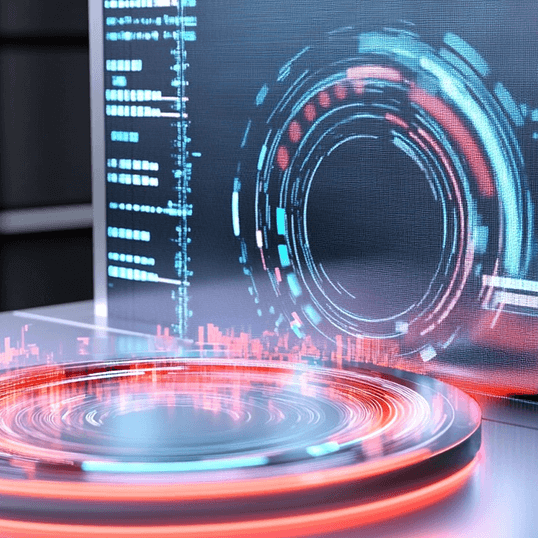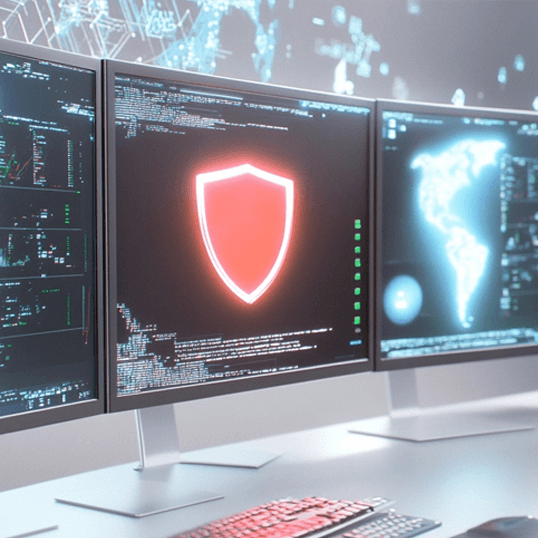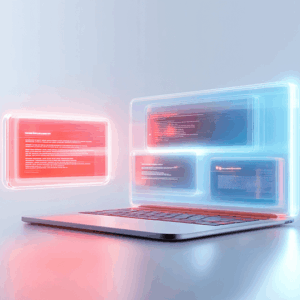Artificial intelligence (AI) is playing a transformative role in cybersecurity. AI-driven security solutions are now essential for organizations looking to protect sensitive data, detect threats, and respond to cyberattacks in real time. However, with AI’s increasing integration into various business processes, new challenges and risks arise. Cybercriminals are also leveraging AI to execute more sophisticated attacks, making it more crucial than ever to stay ahead of emerging threats.
As AI technology continues to advance, its potential to enhance cybersecurity grows exponentially. Organizations are adopting AI to not only strengthen threat detection and response times but also to predict and prevent future breaches. However, as the use of AI in defense mechanisms expands, cybercriminals are also adopting AI to develop more evasive and adaptive attack strategies. This creates a constant arms race between cybersecurity experts and cyber adversaries, making it essential for businesses to stay ahead of AI-powered threats with cutting-edge security solutions and constant vigilance.
This article explores the key AI-driven cybersecurity trends expected to shape 2025, including advancements in AI-powered security solutions, the rise of AI-enabled cyber threats, regulatory challenges, and innovative defense mechanisms such as Google security, data protection, and breach and attack simulator (BAS) technologies.
AI data security refers to the use of AI to strengthen cybersecurity—enhancing data protection, detecting threats, and improving response speed and accuracy. As AI technology evolves, its ability to bolster cybersecurity grows exponentially.
AI-Driven Cybersecurity Solutions
AI-powered security tools are becoming indispensable for businesses and governments alike. These solutions help automate threat detection, streamline incident response, and enhance security analytics. In 2025, the following AI-driven security innovations are expected to dominate:
a) Predictive Threat Detection
Traditional security systems rely on predefined rules to detect threats, making them reactive rather than proactive. AI, however, can analyze massive datasets in real time, identifying potential cyber threats before they materialize. Machine learning (ML) algorithms can predict and mitigate vulnerabilities, reducing the likelihood of a data security breach.
b) Automated Incident Response
Security operations centers (SOCs) increasingly rely on AI-powered automation to respond to cyber threats faster than human analysts can. AI can instantly analyze an attack, isolate compromised systems, and neutralize threats, significantly reducing response times.
c) AI-Enhanced Anomaly Detection
By monitoring network traffic and user behavior, AI can detect deviations from normal activity patterns. These anomalies may indicate unauthorized access, malware infiltration, or other security breaches. Google security tools already integrate AI to flag suspicious activities and provide real-time alerts.
The Rise of AI-Powered Cyber Threats
While AI enhances cybersecurity, it also gives rise to new types of cyber threats. Cybercriminals are harnessing AI to develop more sophisticated attack techniques, making traditional security measures obsolete.
a) AI-Generated Phishing Attacks
AI can generate highly personalized phishing emails that are nearly indistinguishable from legitimate messages. These emails exploit human psychology, tricking users into divulging sensitive information, such as login credentials or financial details.
b) Deepfake Attacks
Deepfake technology enables cybercriminals to manipulate voice and video, making fraudulent communications more convincing. Attackers can impersonate executives or employees to execute fraudulent transactions or leak confidential data.
c) AI-Driven Malware
Malware powered by AI can autonomously adapt to security defenses, altering its code to evade detection. This makes traditional signature-based antivirus software ineffective, necessitating more advanced AI-driven security solutions.
The Growing Importance of Zero Trust Architecture (ZTA)
Zero Trust Architecture (ZTA) is a cybersecurity model that requires strict identity verification for every person and device attempting to access resources. Unlike traditional perimeter-based security models, Zero Trust assumes that threats may exist both inside and outside the network.
a) Why Zero Trust is Gaining Traction
With the rise of remote work, cloud adoption, and AI-driven threats, organizations must implement Zero Trust principles, including:
- Least privilege access: Employees and devices should only have access to the data necessary for their role.
- Continuous authentication: Even authenticated users must continuously verify their identity.
- Micro-segmentation: Networks are divided into isolated zones to prevent lateral movement by attackers.
b) Google Security and Zero Trust
Google security has been at the forefront of Zero Trust adoption with its BeyondCorp framework, ensuring that users and devices must authenticate before accessing corporate resources, regardless of their location.
AI-Enhanced Data Encryption and Privacy Protections
Encryption plays a vital role in securing sensitive data, and AI is enhancing encryption techniques to make them more resilient against attacks. In 2025, expect to see:
a) AI-Powered Encryption Algorithms
AI is being used to create adaptive encryption models that automatically adjust security levels based on detected threats. These AI-driven models can optimize data protection without compromising system performance.
b) Homomorphic Encryption
This advanced encryption technique allows computations on encrypted data without the need for decryption. This ensures that sensitive data remains protected, even during processing.
c) Quantum-Resistant Cryptography
With quantum computing on the horizon, traditional encryption methods may become obsolete.. AI is helping develop quantum-resistant cryptographic algorithms that will secure data security in the post-quantum era.
Strengthening Cloud Security with AI
As more organizations migrate to cloud-based infrastructures, securing cloud environments is a top priority. AI-driven cloud security solutions will become more advanced in 2025, offering:
a) Automated Cloud Threat Detection
AI continuously scans cloud environments for anomalies, ensuring that security teams are alerted to potential threats in real time.
b) Adaptive Access Controls
AI-powered authentication mechanisms analyze user behavior to determine whether access requests are legitimate. If suspicious activity is detected, access permissions can be automatically revoked.
c) AI-Driven Security Audits
AI assists in conducting real-time security audits to ensure compliance with evolving regulations and security policies. Google security is already integrating AI to strengthen cloud security and protect against data breaches.
The Role of Regulations in AI Data Security
Governments and regulatory bodies worldwide are implementing stricter data security laws to address AI-related risks.
In 2025, businesses will need to adhere to new regulations, such as:
- AI transparency laws: Organizations must disclose how AI processes and protects data.
- Enhanced data protection regulations: Stricter compliance measures similar to GDPR and CCPA will be enforced.
- AI governance frameworks: Businesses must establish ethical AI policies to prevent bias and misuse.
Non-compliance with these regulations could result in heavy fines and reputational damage, making adherence to AI data security laws a business necessity.
For more information Get in touch with us today by visiting CyberProof.
Conclusion
As AI continues to shape the future of cybersecurity, businesses and individuals must remain vigilant. From AI-driven security solutions to breach and attack simulator technologies, proactive measures are essential to mitigate risks. The adoption of Google security, data security, and AI data security best practices will be crucial for organizations to protect their digital assets in 2025 and beyond. By staying ahead of emerging threats and leveraging AI-powered cybersecurity solutions, organizations can ensure robust data protection and maintain trust in an increasingly digital world.
FAQ
How is AI improving cybersecurity?
AI enhances cybersecurity by automating threat detection, enabling real-time responses, and improving security analytics. AI-driven tools can identify vulnerabilities, detect anomalies, and mitigate cyber threats more efficiently than traditional security systems.
What are AI-powered cyber threats?
Cybercriminals use AI to create sophisticated attacks, including AI-generated phishing emails, deep fake scams, and AI-driven malware that adapts to security defenses. These threats make traditional security measures less effective.
What is Zero Trust Architecture (ZTA), and why is it important?
Zero Trust Architecture (ZTA) assumes that threats exist both inside and outside an organization’s network. It enforces strict identity verification, least privilege access, and continuous authentication to prevent unauthorized access and data breaches.
How do breach and attack simulators (BAS) help with cybersecurity?
BAS tools simulate real-world cyberattacks to test an organization’s defenses. They help identify security vulnerabilities, improve incident response strategies, and ensure continuous security validation against evolving threats.
What role does AI play in data encryption?
AI enhances encryption through adaptive models, homomorphic encryption, and quantum-resistant cryptography. These technologies improve data protection without compromising system performance, ensuring secure processing and storage.
How does AI improve cloud security?
AI-driven cloud security solutions offer automated threat detection, adaptive access controls, and real-time security audits. These advancements help organizations safeguard cloud environments against data breaches and cyber threats.
What regulations are shaping AI data security in 2025?
Governments are enforcing AI transparency laws, stricter data protection regulations (similar to GDPR and CCPA), and AI governance frameworks to ensure ethical AI use and prevent misuse of AI-driven technologies. Businesses must comply to avoid fines and reputational damage.
How does AI detect cyber threats before they happen?
AI uses predictive threat detection by analyzing large datasets in real time. Machine learning algorithms identify patterns and anomalies, allowing organizations to detect and prevent cyber threats before they materialize.
What is AI-driven malware, and how does it work?
AI-driven malware can autonomously modify its code to evade detection by traditional antivirus programs. It adapts to security defenses, making it more challenging to identify and neutralize compared to conventional malware.













